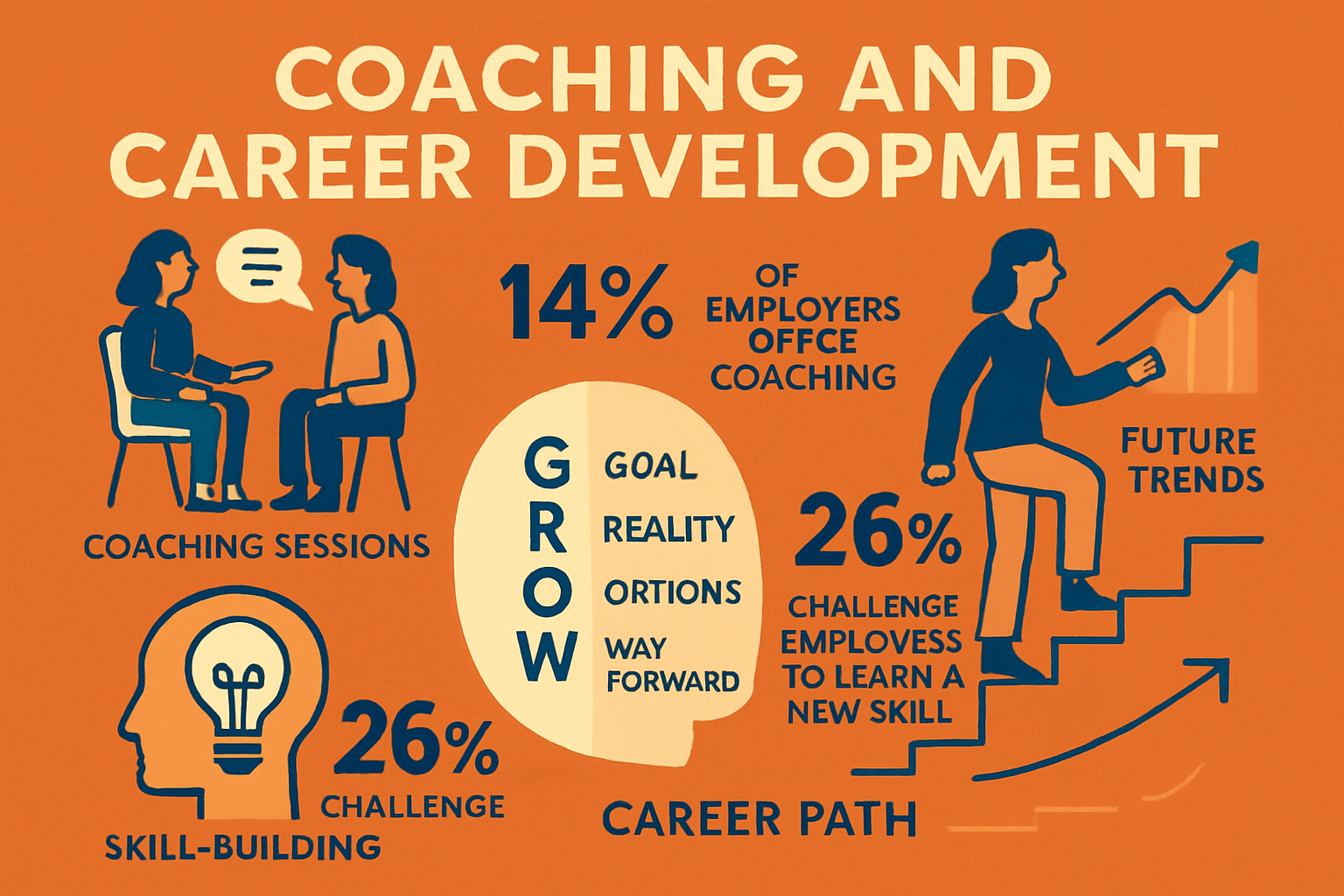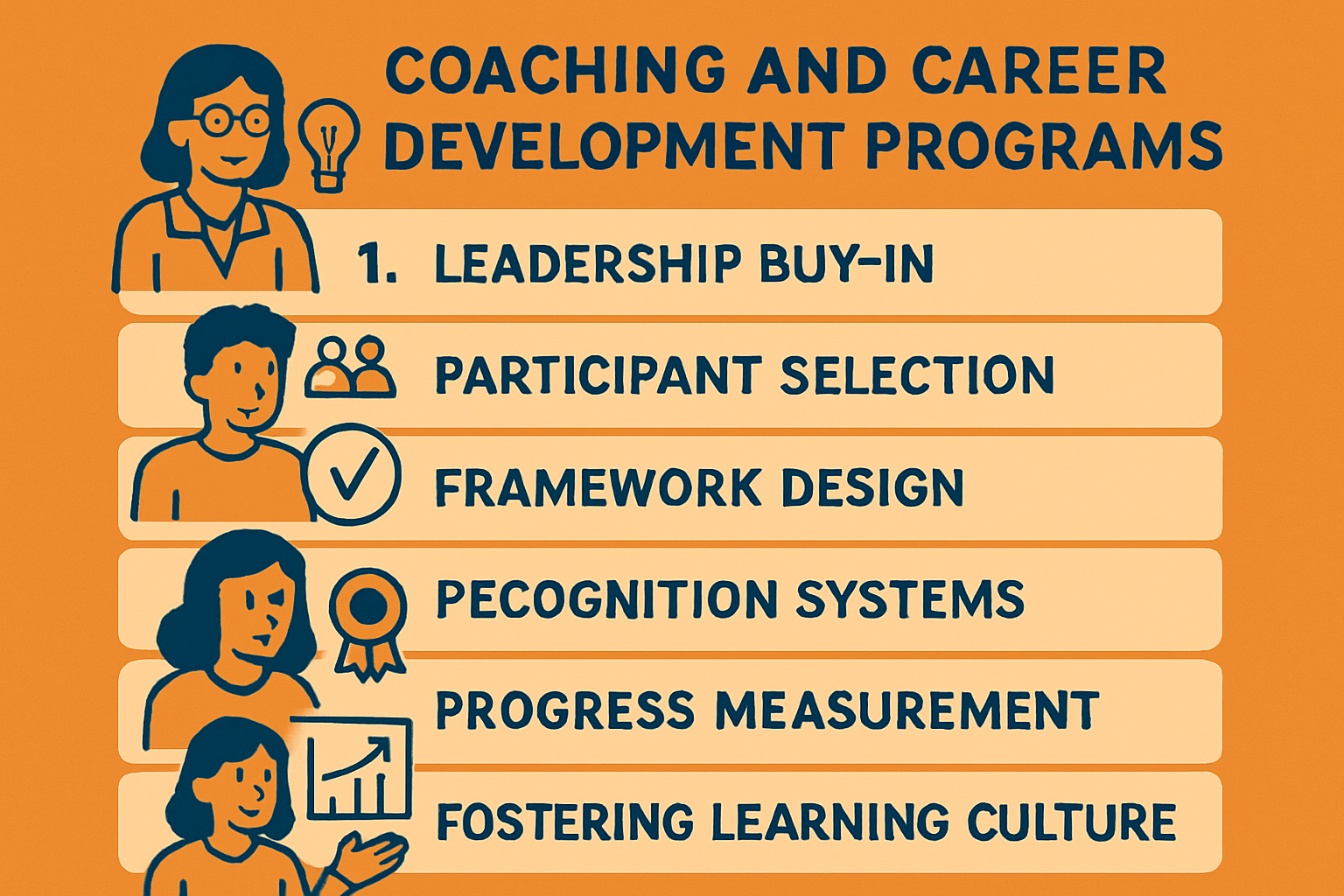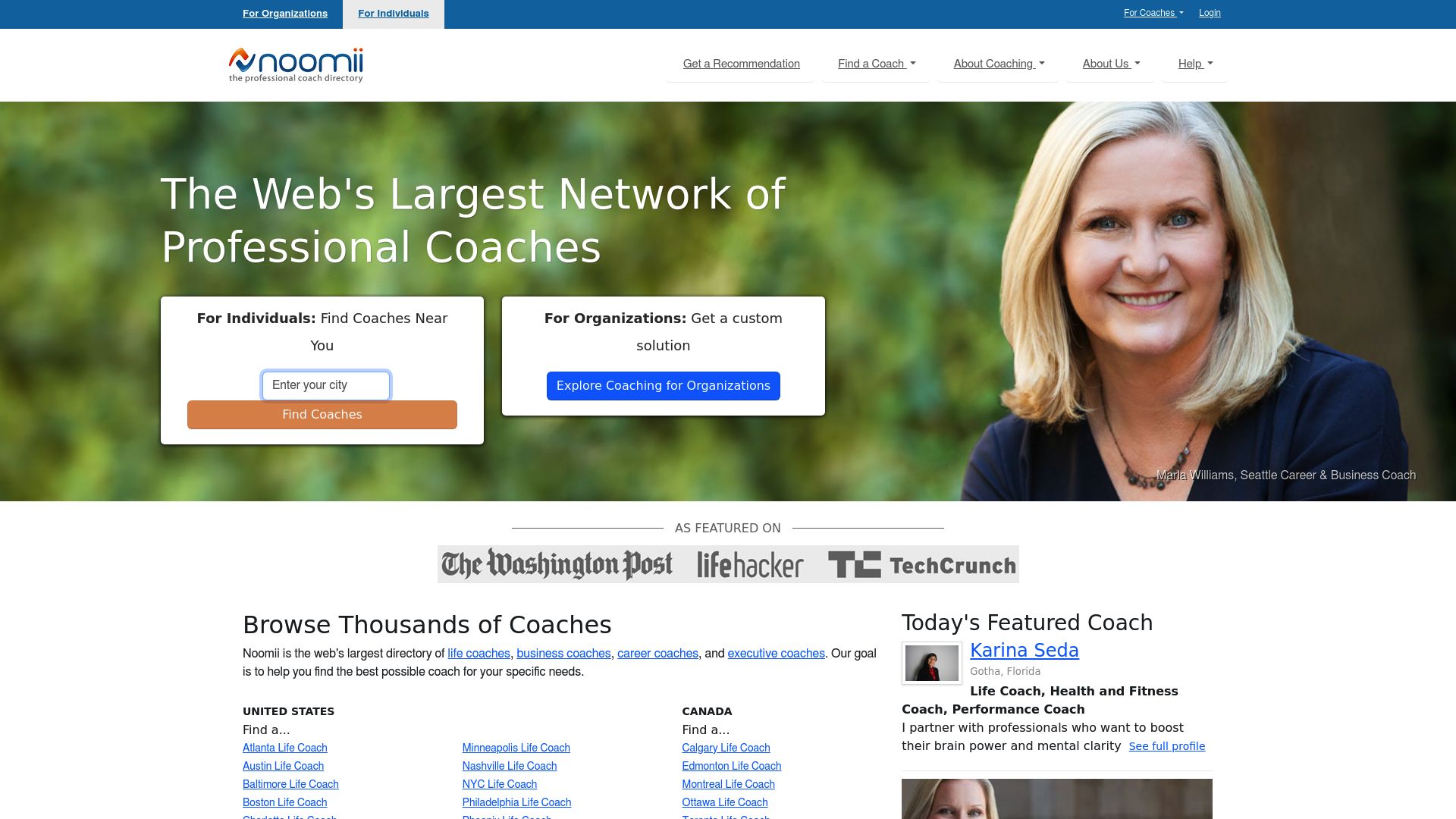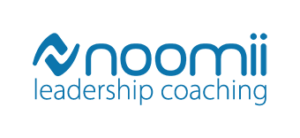Coaching and Career Development Guide for Success 2025
In today’s rapidly changing workplace, investing in coaching and career development has become essential for anyone aiming to succeed in 2025 and beyond. Did you know only three in ten employees feel encouraged to grow at work? This highlights the urgent need for upskilling and intentional career advancement.
Strategic coaching and career development don’t just boost engagement—they help align personal ambitions with organizational goals, leading to higher retention and performance. Whether you’re an individual or part of a team, this guide will walk you through definitions, benefits, step-by-step implementation, new trends, and practical strategies.
Ready to unlock your full potential? Dive in and discover how to thrive in the new world of work.
Understanding Coaching and Career Development
In today’s complex workplace, understanding coaching and career development is essential for anyone wanting to stay ahead. These two concepts are powerful tools that help individuals and organizations adapt, learn, and thrive.

What is Career Coaching?
Career coaching provides personalized guidance to help individuals navigate their professional journeys, whether they're just starting out or facing a major transition. A career coach works alongside clients to set clear goals, identify strengths, overcome barriers, and stay accountable. One of the most popular frameworks in coaching and career development is the GROW model—Goal, Reality, Options, Will—which offers a structured approach to problem-solving and decision-making.
For example, someone returning to work after parental leave might use coaching to rebuild confidence, set new goals, and plan their next steps. Importantly, coaching isn't just for executives; employees at any level can benefit. Despite its value, only 14% of employers offered one-on-one coaching or mentoring programs in the past year.
Coaching acts as a bridge, connecting current abilities to future opportunities. If you’re curious about how coaching differs from other career support, the Career Coach vs. Headhunter Guide offers further insights into these crucial distinctions.
Defining Career Development
Career development is a structured, ongoing process that focuses on building skills, knowledge, and experiences for long-term growth. It includes several core components:
- Goal setting
- Skill acquisition
- Career pathing
- Performance feedback
Unlike traditional programs that may be one-size-fits-all, coaching and career development often work together to provide a more personalized and impactful experience. For instance, using a career development plan, employees can pinpoint and address skill gaps, paving the way for advancement.
Career development isn’t just the responsibility of the individual; organizations also play a key role in supporting their people. In fact, 26% of employees say their organization challenged them to learn a new skill last year. When both sides invest in growth, engagement and retention naturally rise.
Why Coaching and Career Development Matter in 2025
The world of work is changing fast. Since 2015, 25% of job skill sets have changed, and by 2030, that number could reach 65%. With 75% of employers struggling to find talent with the right skills, coaching and career development have never been more critical.
Employee expectations are also evolving—9 out of 10 job seekers want clear paths for advancement and development. Organizations that prioritize these areas are 2.6 times more likely to exceed financial targets.
Simply put, investing in coaching and career development is essential for future-proofing both careers and organizations.
The Benefits of Coaching and Career Development
Unlocking the true potential of your workforce starts with effective coaching and career development. These strategies are not just buzzwords—they’re essential pillars for building a thriving, future-ready organization. Let’s explore how they impact every level of the business, from talent attraction to innovation and financial performance.
![]()
Attracting and Retaining Top Talent
In today’s competitive job market, coaching and career development have become major differentiators for employers. Nearly two out of three workers contemplate leaving their roles due to a lack of growth opportunities. Organizations that invest in these programs stand out, attracting candidates who value learning and advancement.
Sharing stories about coaching initiatives during recruitment signals a commitment to employee growth. For example, companies that highlight internal mobility and upskilling in their employer brand see higher application rates. According to recent data, internal mobility and upskilling efforts can boost retention by up to 75%.
By weaving coaching and career development into your talent strategy, you create a magnetic environment for top performers who seek more than just a paycheck—they want a pathway to progress.
Boosting Engagement and Productivity
Coaching and career development empower employees to take charge of their professional journeys. This sense of ownership leads to highly engaged teams, which are proven to have 81% less absenteeism and 18% higher productivity.
Personalized development plans increase job satisfaction and motivation, making work feel more meaningful. Teams that participate in coaching report significant improvements in performance metrics, from meeting deadlines to innovating solutions.
The connection between engagement and profitability is strong. When employees feel supported in their growth, they’re more committed, more creative, and more likely to go the extra mile.
Closing Skill Gaps and Driving Innovation
One of the greatest strengths of coaching and career development is their ability to identify and close critical skill gaps. As job requirements evolve, coaching helps pinpoint in-demand and emerging skills, ensuring employees stay ahead of the curve.
Integrating coaching with digital learning platforms and stretch assignments accelerates upskilling and reskilling for future roles. For instance, pairing coaching sessions with online learning modules creates a dynamic, real-time approach to development.
A recent 2025 Workplace Learning Report highlights that organizations prioritizing skill development are four times more likely to drive innovation. This data underscores how coaching and career development fuel a culture of creativity and adaptability.
Improving Business Performance and Culture
The ripple effect of coaching and career development extends to overall business performance and workplace culture. Companies with robust development programs are 2.6 times more likely to exceed their financial targets, illustrating the tangible ROI of investing in people.
A positive learning culture emerges when recognition and rewards reinforce coaching efforts. Publicly celebrating employee growth stories—when done with consent—builds momentum and inspires others to participate.
Recognition not only boosts morale but also creates a sense of belonging and shared purpose. By prioritizing coaching and career development, organizations foster environments where continuous learning and collaboration thrive, driving long-term success.
Step-by-Step Guide to Implementing Coaching and Career Development Programs
Launching a successful coaching and career development program requires careful planning, collaboration, and a clear vision. By following these six steps, organizations can ensure that their initiatives are impactful, sustainable, and aligned with future workforce needs.

Step 1: Secure Buy-In from Stakeholders
Gaining support from leadership is the foundation for any effective coaching and career development program. Leaders set the tone and provide resources, making their involvement crucial.
Begin by presenting a clear business case. Share data on retention, engagement, and innovation that result from coaching and career development. Highlight how executive participation can model commitment for the entire organization.
Consider launching a pilot program with a small group of executives or managers. This not only demonstrates value but also builds credibility. For deeper insights on how leaders can embody a coaching mindset, explore Leader as a Coach Insights.
Finally, maintain open communication. Regularly share progress, celebrate early wins, and invite feedback from all stakeholders. This collaborative approach lays a strong foundation.
Step 2: Identify Participants and Program Scope
The next step is to define who will participate and how broad the coaching and career development program will be. Start by assessing your organization’s goals. Are you focusing on leadership development, high-potential employees, or offering support to all staff?
Decide on the types of coaches to involve. Options include internal managers, peer coaches, or external professionals. Some organizations blend external expertise with internal peer groups to maximize impact.
Align participant selection with your organization’s values and culture. For example, if inclusivity is a priority, ensure all employees have access to coaching and career development opportunities.
A clear scope helps allocate resources effectively and ensures every participant receives meaningful support. Revisit participation criteria regularly as your program evolves.
Step 3: Design Coaching Frameworks and Career Pathways
A structured approach is essential for consistency and measurable growth. Select proven coaching frameworks such as the GROW model to guide conversations and goal setting. This creates a common language and process across the coaching and career development program.
Develop individualized development plans for each participant. Map out clear career pathways, integrating coaching goals with existing learning and development resources. Digital learning modules and stretch assignments can reinforce skill acquisition.
Regularly revisit and update development plans to reflect changing needs and priorities. Only 26% of organizations actively encourage employees to learn new skills, so making these frameworks accessible is a competitive advantage.
Connecting coaching to broader career development ensures personal growth aligns with organizational objectives, keeping everyone on the same page.
Step 4: Integrate Recognition and Reward Systems
Recognition is a powerful motivator and helps sustain momentum in coaching and career development initiatives. Design systems that celebrate growth, whether through formal awards, public shout-outs, or tangible rewards like promotions and raises.
Be specific in your feedback. Acknowledge not just outcomes but also the effort and progress employees make. Sharing success stories, with permission, can inspire others to engage with coaching and career development.
Offer lateral moves, stretch assignments, or new roles as part of your recognition strategy. This reinforces that development is valued at every level.
A culture of recognition encourages participation and helps embed coaching and career development into daily work life.
Step 5: Measure Progress and Optimize Programs
Tracking results is essential for continuous improvement. Establish clear metrics such as performance reviews, retention rates, productivity, and skill gap closure. Use both quantitative data and qualitative feedback from participants to evaluate impact.
Collect demographic data to ensure equitable access and identify areas for improvement. Adjust programs based on what’s working and where challenges arise.
Analytics can help refine and scale successful coaching and career development initiatives. Measuring outcomes not only demonstrates value but also supports ongoing investment from leadership.
Regular reporting keeps stakeholders informed and engaged, promoting transparency and trust.
Step 6: Foster a Culture of Continuous Learning
Sustaining coaching and career development requires more than one-off programs. Encourage ongoing feedback, open communication, and knowledge sharing through peer coaching circles or regular check-ins.
Provide multiple learning opportunities, including virtual workshops, group sessions, and self-directed modules. This flexibility supports diverse learning preferences and busy schedules.
Continuous learning keeps employees agile and ready for change. When coaching and career development become part of the organizational culture, growth becomes second nature.
A learning-focused environment supports long-term success and helps your organization adapt to new challenges as they arise.
Key Trends and Future Directions in Coaching and Career Development for 2025
Change is accelerating, and both individuals and organizations are seeking fresh approaches to coaching and career development. As we look toward 2025, several key trends will redefine how we build skills, foster growth, and future-proof our careers. Let’s explore what’s on the horizon and how you can stay ahead.
The Rise of Digital and AI-Driven Coaching
Technology is transforming coaching and career development in profound ways. Virtual coaching platforms and AI-powered tools now make it possible to scale personalized guidance across entire organizations. Digital solutions break down geographical barriers, allowing employees to access expert support anytime, anywhere.
AI-driven matching connects people with coaches who best fit their needs, while smart platforms offer tailored learning paths and real-time feedback. For example, some systems use data analytics to identify skill gaps and recommend targeted resources, making development more efficient.
The human touch remains essential, but digital tools complement traditional coaching by enhancing accessibility and impact. As these innovations evolve, expect coaching and career development to become more integrated into daily workflows, supporting continuous growth for everyone.
Focus on Skills-Based Career Pathing
The world of work is moving beyond job titles to focus on skills and competencies. This shift is reshaping coaching and career development strategies, encouraging organizations to map career paths based on what employees can do—not just their roles.
Skills-based frameworks support agility, enabling people to pivot, upskill, or transition as business needs change. Companies are now clustering roles by required skills, which helps employees see clear pathways for advancement and identify which capabilities to develop next.
According to Career Development in 2025, 65% of jobs will require new skills by 2030. Embracing skills-based career pathing ensures that coaching and career development efforts remain relevant and responsive to future demands.
Diversity, Equity, and Inclusion in Coaching
Expanding access to coaching and career development is crucial for building diverse, innovative teams. Organizations are recognizing the need to offer coaching opportunities to underrepresented groups, such as women, minorities, and those returning to the workforce.
Equitable programs ensure everyone benefits from guidance and growth, regardless of background or position. Targeted coaching initiatives—like mentorship circles for women or leadership coaching for minority groups—help close opportunity gaps and foster a sense of belonging.
Research shows that inclusive coaching and career development directly improve retention, engagement, and innovation. By prioritizing equity, organizations create cultures where every voice is valued and every employee can thrive.
Integration of Coaching with Broader Talent Strategies
Coaching and career development are no longer standalone initiatives. Leading organizations now weave them into broader talent strategies, including succession planning, talent mobility, and learning and development programs.
This integrated approach aligns coaching with business goals, ensuring that leadership pipelines are continually refreshed and employees are prepared for future challenges. For example, coaching is often used as a stepping stone to leadership development or as part of onboarding for high-potential hires.
Analytics and data-driven insights help track progress and optimize these efforts, making coaching and career development a core part of organizational resilience. By connecting development programs with overall talent management, companies maximize return on investment and unlock the full potential of their workforce.
Actionable Strategies for Individuals and Organizations
Empowering yourself or your organization through coaching and career development is not a one-size-fits-all journey. Whether you’re seeking personal growth or aiming to scale programs across teams, there are practical steps you can take to maximize results. Let’s break down targeted strategies for both individuals and organizations, plus tips for finding the right coaching solution.
For Individuals: Maximizing Personal Growth through Coaching
Taking charge of your coaching and career development starts with a proactive mindset. Begin by clarifying your goals—what do you want from your career in the next year or five? Self-reflection before coaching sessions can help you identify strengths, gaps, and aspirations.
Prepare for each session by jotting down questions or challenges. Embrace feedback, as it’s a cornerstone of growth. Use coaching to navigate transitions, such as a promotion, a role change, or returning after a break. For example, working with a coach during a career pivot can help you set realistic milestones and stay accountable.
Consider these steps to make the most of coaching and career development:
- Identify your core values and how they align with your work.
- Set specific, measurable goals with your coach.
- Track your progress and celebrate small wins.
- Seek feedback regularly and adjust your plan as needed.
Individuals who invest in coaching and career development report higher satisfaction and faster advancement. Remember, growth is a journey, not a destination.
For Organizations: Building Scalable Coaching Programs
Organizations aiming to embed coaching and career development into their culture should start with a pilot program. Test different approaches—blend internal mentors with external coaches—to discover what resonates best with your team. Gather feedback and scale what works.
Integrate coaching into onboarding, leadership tracks, and ongoing learning initiatives. Connect coaching and career development with digital learning platforms and stretch assignments to create a holistic ecosystem. For instance, pairing coaching with group learning circles can foster peer support and knowledge sharing.
Key steps for organizations:
- Launch a small pilot and evaluate results.
- Blend internal and external coaching resources.
- Align coaching and career development with business goals.
- Provide recognition and rewards for growth milestones.
- Use data to refine your approach for inclusivity and impact.
Organizations with robust coaching and career development programs see stronger retention, innovation, and engagement. The most successful initiatives treat learning as a continuous process, not a one-time event.
How to Find the Right Coach or Coaching Solution
Finding the right fit can be the difference between a transformative experience and a missed opportunity. Start by defining your coaching and career development needs—are you looking for support in leadership, team dynamics, or a specific skill set? Consider what style of coaching resonates with you or your organization.
Evaluate potential coaches based on their credentials, experience, and approach. Don’t hesitate to ask for references or sample sessions. Use reputable directories to streamline your search. For instance, platforms like Find Professional Career Coaches allow you to filter by specialty, location, and coaching style, making it easier to connect with vetted experts.
Tips for selecting the right coach:
- Clarify your goals before reaching out.
- Review testimonials and success stories.
- Schedule introductory calls to gauge chemistry.
- Choose someone who aligns with your learning preferences.
The right coach-client match is essential for effective coaching and career development outcomes.
Find Professional Coaches Easily with Noomii
Noomii is the world’s largest online directory dedicated to coaching and career development. It connects individuals and organizations with vetted professionals in career, executive, business, and life coaching. You can search by specialty, location, or coaching style—or use Noomii’s SmartMatch™ service for personalized recommendations.

Noomii is trusted by thousands for its comprehensive listings and tailored matching process. The platform supports both clients and coaches, offering marketing tools, lead generation, and practice management resources. For organizations, Noomii delivers scalable coaching and career development solutions, with dedicated support for leadership and team growth.
Why choose Noomii for coaching and career development?
- Access a global network of vetted coaches.
- Benefit from resources to guide your journey.
- Find scalable solutions for teams and organizations.
- Rely on educational content to support continuous learning.
Noomii’s reach and commitment to quality make it a one-stop solution for anyone serious about coaching and career development.
Overcoming Common Challenges in Coaching and Career Development
Navigating the road to successful coaching and career development can be as rewarding as it is challenging. While the benefits are clear, organizations and individuals often face obstacles that can slow or stall progress. Understanding and addressing these challenges is key to ensuring that coaching and career development initiatives deliver lasting value.
Addressing Resistance to Change
Resistance is a natural reaction when introducing new coaching and career development programs. Employees may feel skeptical or fear failure, especially if they’re unfamiliar with coaching. Open communication is essential. Share real success stories and highlight small wins to build trust and momentum.
Leadership plays a vital role by modeling commitment and participating in pilot programs. Involving skeptics in early stages can transform them into advocates. According to Executive Coaching Industry Statistics, organizations that prioritize coaching see higher engagement and lower resistance. By addressing concerns honestly and transparently, coaching and career development become more approachable for everyone.
Ensuring Program Accessibility and Equity
For coaching and career development to succeed, programs must be accessible and equitable. Barriers such as cost, time constraints, or lack of awareness can prevent participation, especially for underrepresented groups. Offering flexible options—like virtual sessions, group formats, or one-on-one coaching—widens access.
Organizations can use online directories like the Business Coaching Services Overview to connect with a diverse pool of coaches and tailor support for different needs. Promoting inclusion by reaching out to all levels and backgrounds ensures coaching and career development have a broader, more meaningful impact.
Maintaining Engagement and Measuring Impact
Sustaining engagement is vital for the long-term success of coaching and career development initiatives. Regular check-ins, open feedback loops, and visible recognition help keep momentum alive. Using data analytics to track progress—such as participation rates, skill growth, and retention—enables ongoing improvement.
Adjusting programs based on participant feedback ensures they remain relevant and effective. Celebrating achievements, both big and small, reinforces the value of coaching and career development. Continuous measurement not only demonstrates impact but also supports further investment in growth.
Adapting to Evolving Workforce Needs
The world of work is changing fast, and coaching and career development must keep pace. Monitoring industry trends and emerging skill requirements helps organizations stay agile. Updating coaching content and career pathways ensures employees are prepared for new challenges.
Integrating new technologies and methodologies into programs keeps learning fresh and engaging. Flexibility is essential—what worked last year may need to evolve. By staying attuned to change, coaching and career development initiatives empower individuals and organizations to thrive in any environment.
If you’re ready to take your coaching practice to the next level and reach more clients who need your expertise—now’s the perfect time. As we’ve explored, the demand for coaching and career development is only growing, with more individuals and organizations seeking guidance for success in 2025 and beyond. By making yourself visible where people are actively searching, you can position yourself as the go-to expert in your field. Start building your presence and open new doors for your business—Get Your Free Listing today.

Leave a Reply
Want to join the discussion?Feel free to contribute!